Akanksha Paul
Implicit Discriminator in Variational Autoencoder
Sep 28, 2019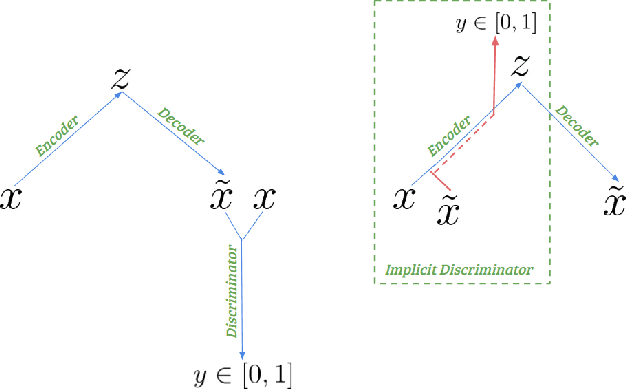
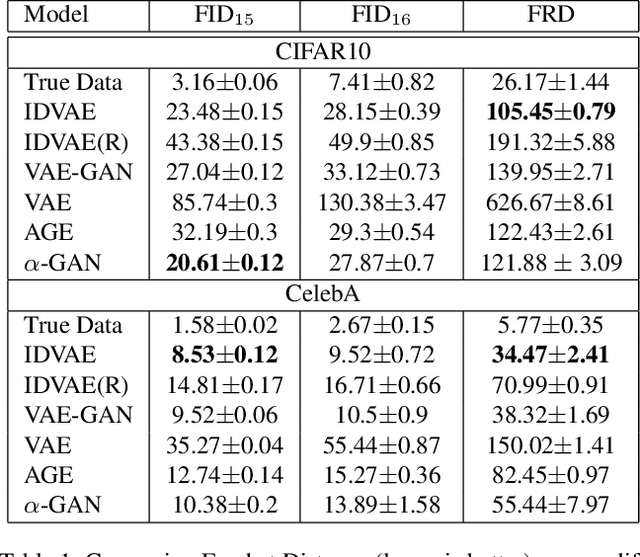
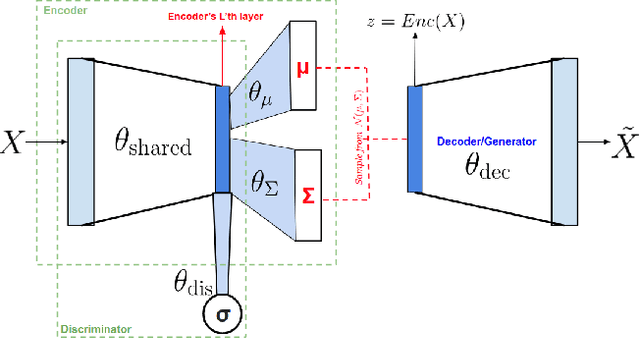
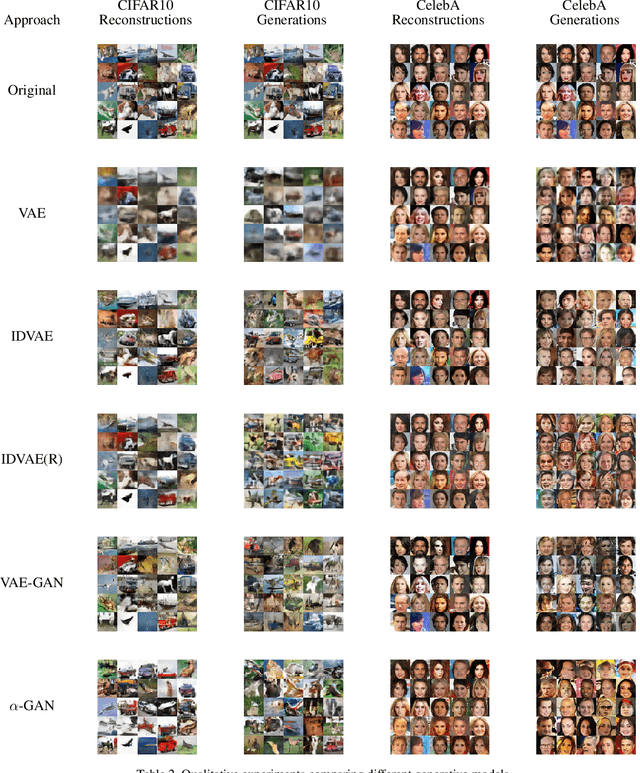
Abstract:Recently generative models have focused on combining the advantages of variational autoencoders (VAE) and generative adversarial networks (GAN) for good reconstruction and generative abilities. In this work we introduce a novel hybrid architecture, Implicit Discriminator in Variational Autoencoder (IDVAE), that combines a VAE and a GAN, which does not need an explicit discriminator network. The fundamental premise of the IDVAE architecture is that the encoder of a VAE and the discriminator of a GAN utilize common features and therefore can be trained as a shared network, while the decoder of the VAE and the generator of the GAN can be combined to learn a single network. This results in a simple two-tier architecture that has the properties of both a VAE and a GAN. The qualitative and quantitative experiments on real-world benchmark datasets demonstrates that IDVAE perform better than the state of the art hybrid approaches. We experimentally validate that IDVAE can be easily extended to work in a conditional setting and demonstrate its performance on complex datasets.
Semantically Aligned Bias Reducing Zero Shot Learning
Apr 16, 2019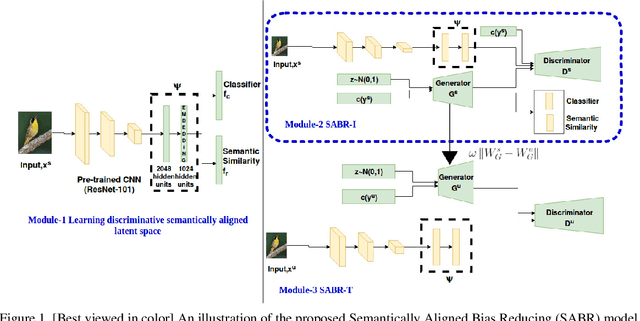
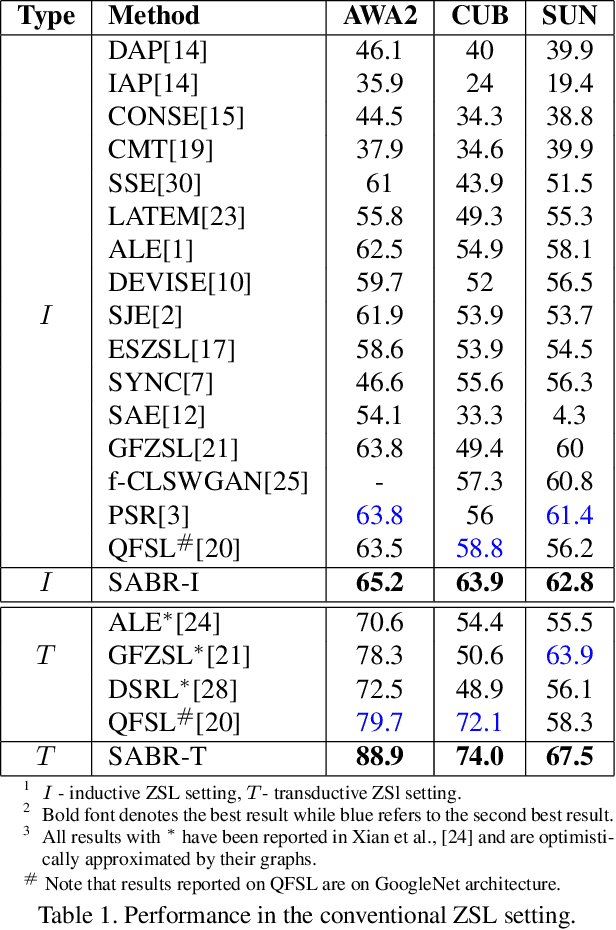
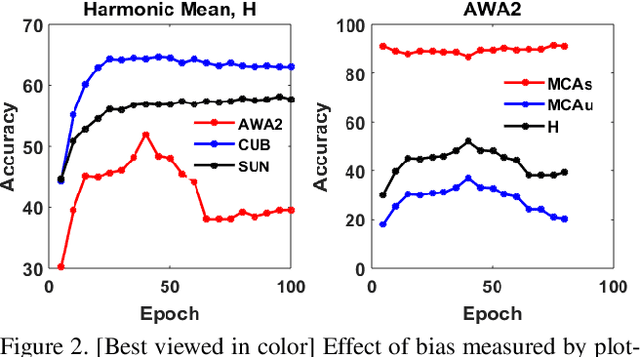
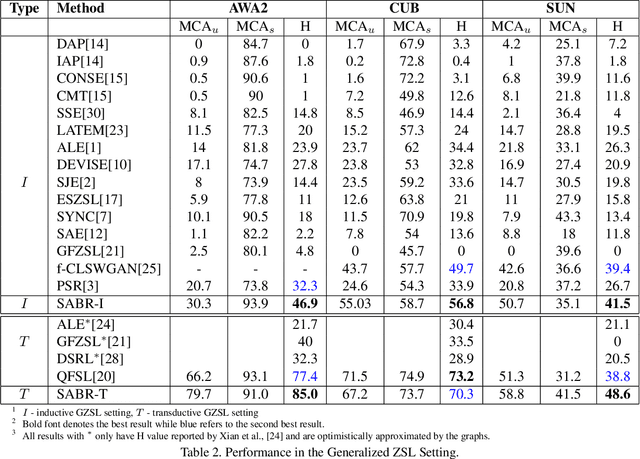
Abstract:Zero shot learning (ZSL) aims to recognize unseen classes by exploiting semantic relationships between seen and unseen classes. Two major problems faced by ZSL algorithms are the hubness problem and the bias towards the seen classes. Existing ZSL methods focus on only one of these problems in the conventional and generalized ZSL setting. In this work, we propose a novel approach, Semantically Aligned Bias Reducing (SABR) ZSL, which focuses on solving both the problems. It overcomes the hubness problem by learning a latent space that preserves the semantic relationship between the labels while encoding the discriminating information about the classes. Further, we also propose ways to reduce the bias of the seen classes through a simple cross-validation process in the inductive setting and a novel weak transfer constraint in the transductive setting. Extensive experiments on three benchmark datasets suggest that the proposed model significantly outperforms existing state-of-the-art algorithms by ~1.5-9% in the conventional ZSL setting and by ~2-14% in the generalized ZSL for both the inductive and transductive settings.
 Add to Chrome
Add to Chrome Add to Firefox
Add to Firefox Add to Edge
Add to Edge